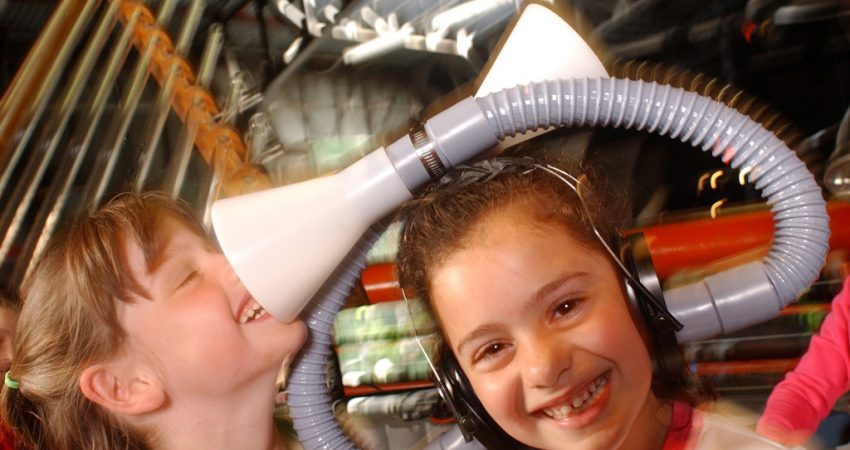
By Heather King - May 2011
PAPER CITATION
Gusiasola, J., Solbes, J., Barragues, J-J., Morentin, M., & Moreno, A. (2009). Students’ understanding of the special theory of relativity and design for a guided visit to a science museum. International Journal of Science Education, 31(15), 2085–2104.
WHY IT MATTERS TO YOU
For ISE practitioners working with classroom teachers on the design of educational activities—both for classrooms and out-of-school settings—this study highlights the importance of stimulating learner interest in a topic prior to a visit to engage with the content or ideas in full, and the need for further follow-up. The study’s authors also recommend the need for educators to be familiar with the content in an exhibition if they intend to include it in a learning sequence.
What Is The Issue?
In this paper, the learning resources and museum visit that formed part of an undergraduate teaching sequence on the special theory of relativity (STR) are described and discussed. Findings highlight the importance of integrating pre- and post-visit activities, although the methods used to evaluate the impact of the experience do not offer conclusive results.
What Was The Study?
In recognition of prior research that highlights the importance of linking classroom- and museum-based experiences and the need for student-centred learning, the authors designed educational materials that incorporated students’ own questions or topics previously analysed in class. The authors were also able to make good use of the museum resources as the teacher leading the experimental group had also participated in the design and development of the exhibition. The full teaching sequence involved a 2-hour pre-visit activity, a 1.5-hour museum visit to an exhibit on STR (please see note below on “A Century of the Special Theory of Relativity 1905–2005”), and a subsequent 2-hour follow-up class. The first year undergraduate students (n = 35) were provided with information in the pre-visit class and were free to research further during the museum visit. The follow-up class involved writing an explanatory account on aspects of the STR.
To determine any change in student understanding or attitudes to STR, the researchers used questionnaires, and analysed the students’ final report by the extent to which claims were supported by evidence, a key feature of effective argumentation. To look at the impact of the visit in particular, attention was focused on the extent to which the post-visit reports included data only presented in the exhibition.
What Were The Findings?
The analysis of the questionnaires indicated that the students were not familiar with STR before the learning sequence. From their analysis of the reports, the authors note that the majority of students explicitly stated that they had a better understanding of STR following the pre-visit session and the visit. However, the analyses also found that half of the reports did not contain elements of argumentation or causal explanations relating to processes of STR. In addition, half the reports were found not to include any data from the exhibition.
More positively, the authors note that half of the students were found to engage with the exhibition data and were able to make many more scientific arguments as a result of the visit, although again not all the information in the exhibit was utilised. The authors note that “inviting visitors to [an] exhibition, with the aim of getting them to integrate the information from the panels and simulations, and thus form their own opinion and conclusions, does not always have the desired effect.” In other words, and here both classroom teachers and ISE practitioners should take heed, you can lead a horse to water, but you can’t make it drink.
It is important to note that the approach for assessing the impact of the learning sequence adopted by the researchers in this study does not offer much in the way of useful feedback to the course tutors. For example, in focusing on the number of evidence-supported claims in the students’ reports, rather than the type of or lack of claim, the resulting findings do not highlight the particular aspects which are not understood by students and need further explication.
For further reading, the exhibition “A Century of the Special Theory of Relativity 1905–2005” comprised the following key topics:
• the speed with which we can transmit information
• reference systems: simultaneity of events and measuring time
• the problem of the limit of the speed of light
• the origin of nuclear energy




